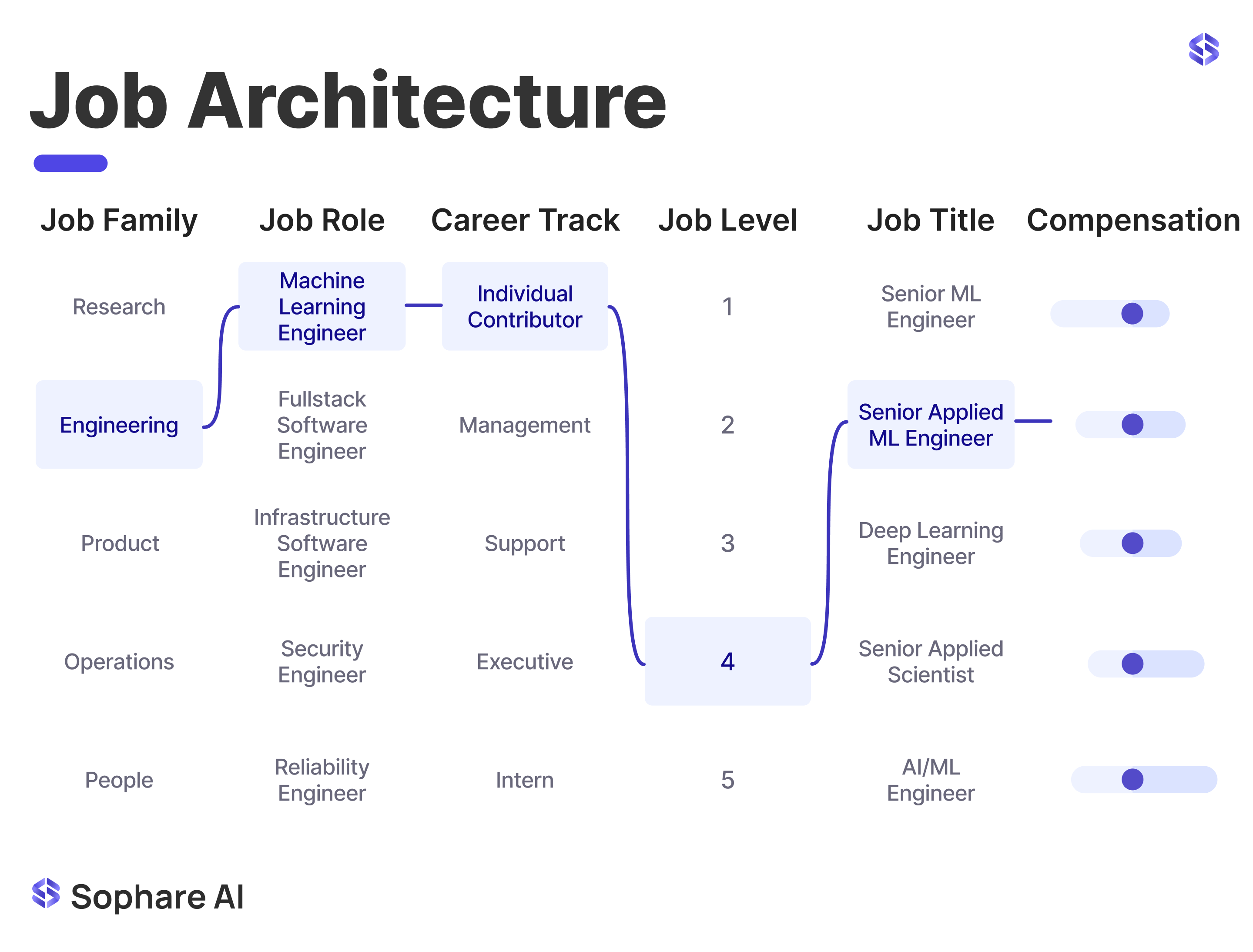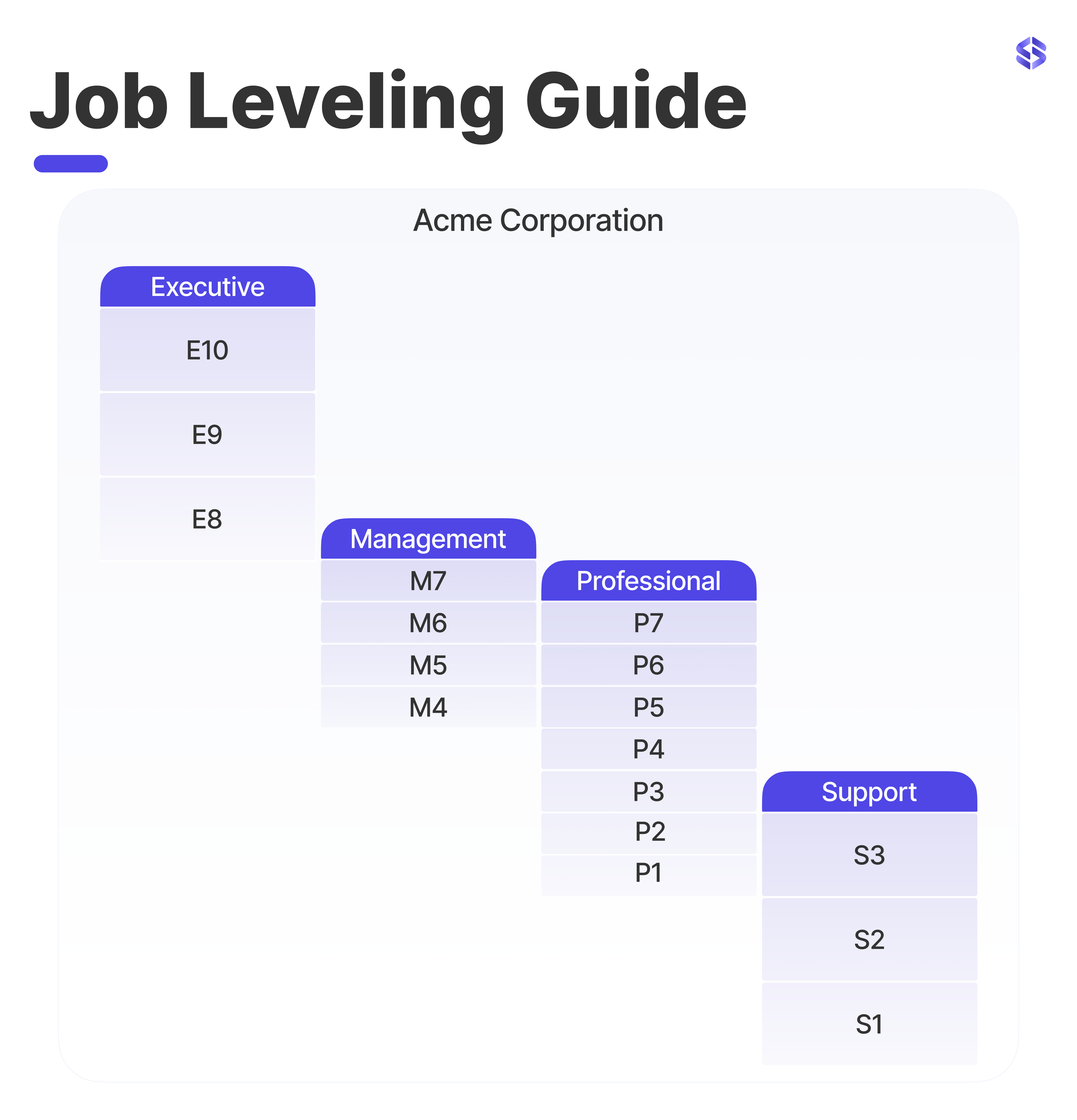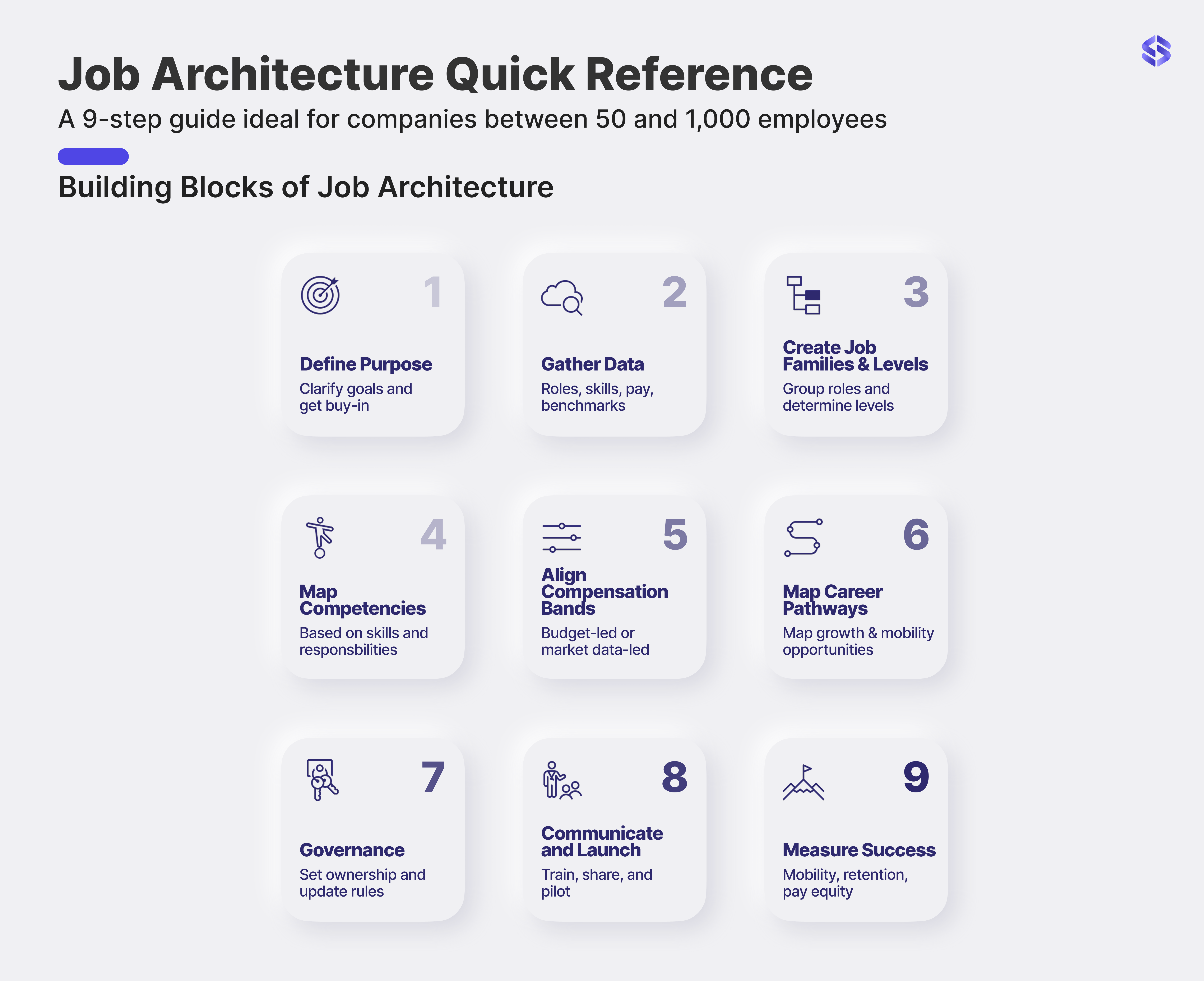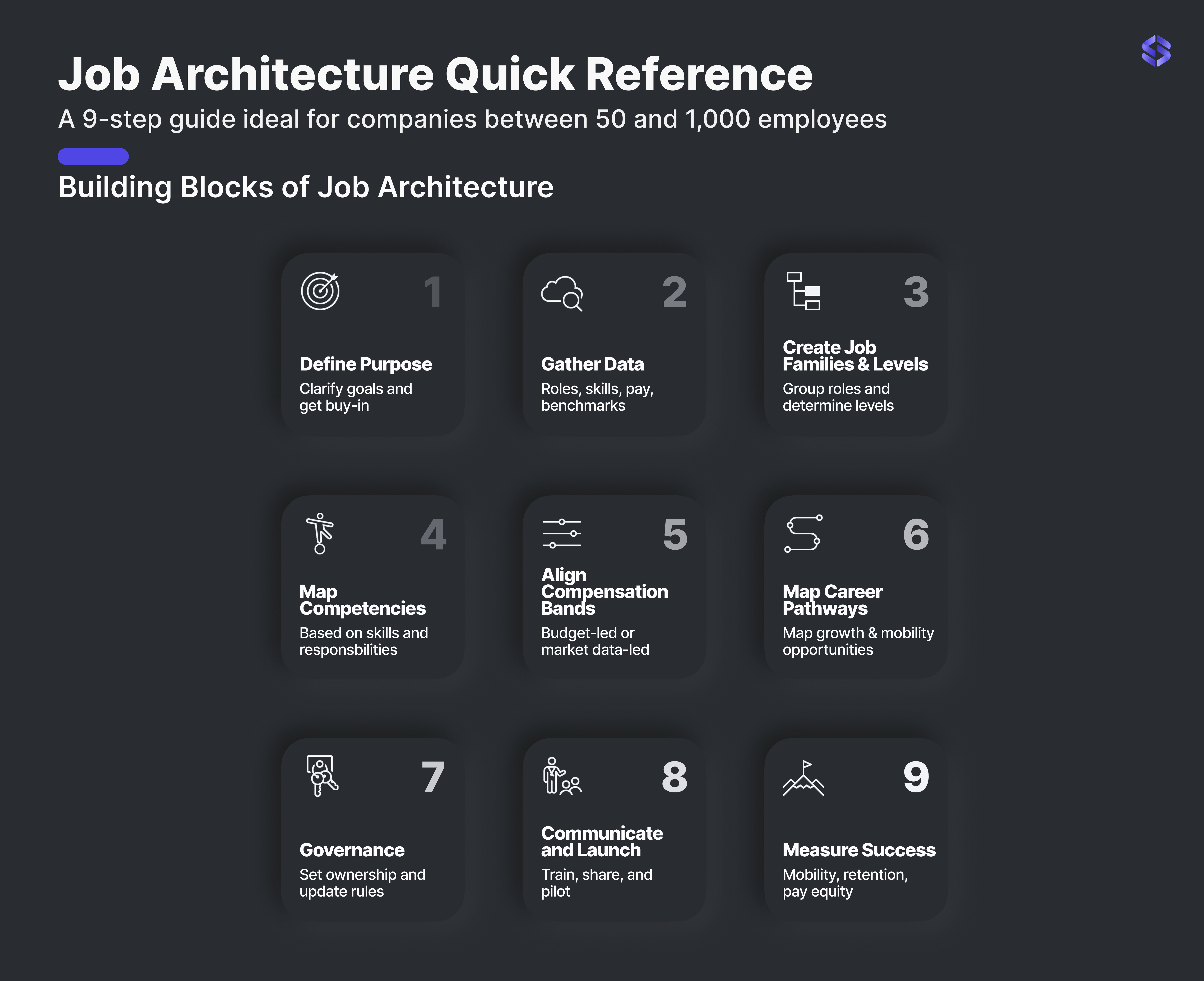Building Your First Job Architecture: A Strategic Guide for Growing Businesses
Having a clear job architecture is both mission-critical and high-return.
When a company begins to scale, structure becomes its quiet superpower. Think of job architecture as the blueprint of a building, or the trellis of a growing vine, or if you're musically inclined, the sheet music of a symphony. Human skills organized into neat families, levels, and titles all working together to shape, support, and harmonize growth. With the right design, every role finds its rhythm, every team climbs in sync, and the whole organization plays in tune. As AI reshapes how work is organized, this foundation helps companies adapt to new instruments, new tempos, and entirely new ways of working.
This guide explains how to build a future-ready job architecture that strengthens your workforce, supports pay transparency, and adapts to rapid changes driven by AI and automation.

What is Job Architecture
Job architecture is a structured framework that defines and organizes every role in a company. It provides a foundation for consistency in job design, compensation, and career progression.
A complete job architecture typically includes:
- Job families or functions (e.g., Engineering, Product, Operations)
- Job levels (junior, mid, senior, lead), often mapped to numeric grades
- Titles and job codes that connect levels and families
- Core responsibilities and competencies for each role and level
- Compensation structures aligned with responsibilities and impact
- Career paths—both vertical and lateral—so employees can see how to grow
Job architecture is not the same as an organizational chart or reporting hierarchy. It describes what people do, how roles differ, and how careers evolve—not just who reports to whom.
Why Job Architecture Is a Growth Multiplier
Here are the key benefits of a robust job architecture, each supported by research and real-world trends:
| Benefit | What the Research Says / Why It Matters |
|---|---|
| Pay equity | Without a clear job architecture, similar roles can have inconsistent pay. Structured leveling and benchmarking reduce bias and align compensation across teams. |
| Career clarity & retention | Employees stay longer when they understand how to grow. Lack of visible career progression is one of the most common reasons for attrition. |
| Operational scalability | As companies expand, ad-hoc titles and roles create chaos. A standardized framework enables consistent onboarding, promotions, benchmarking, and workforce planning. |
| Talent strategy alignment | A unified framework aligns skills, roles, and business goals—critical for industries undergoing rapid change or digital transformation. |
| Data integrity | Standardized job data gives analytics teams—from Finance to HR to Go-to-Market—greater accuracy and clarity in reporting, including at the executive level. |
Avoiding Common Pitfalls in Job Architecture Design
Building a job architecture is complex work. These are the risks to watch for:
- Over-engineering too early: Designing an overly detailed framework slows adoption and creates friction
- Lack of stakeholder alignment: Managers, employees, and leaders must agree on level definitions, responsibilities, and compensation trade-offs
- Ignoring market benchmarks: Without external data, level bands and competencies can drift away from labor-market realities
- Missing governance: Without clear ownership and review cycles, job frameworks become outdated
Step‐by‐Step: How to Build Your First Job Architecture
Below is a structured path. You can adapt based on your size, resources, scale, and business strategy.
-
Clarify your “why” What problem(s) are you solving? Pay inequity? Lack of career paths? Difficulty scaling? Hiring managers unclear on what “senior” means? The clearer your purpose, the better your design.
-
Gather your data baseline
-
Catalog all existing roles, titles, job descriptions, responsibilities. Be sure to include new roles that are being hired for!
-
Collect compensation & benefits data
-
Collect performance & skills data if you have it
-
Gather external benchmarking data (market rates, required skills in your industry/region)
-

Define job families and functions Group roles by function (e.g. engineering, product, marketing) or discipline. Sometimes also sub‐families (e.g. frontend engineering, ML engineering). Keep them logical but flexible.
Create levels
For each job family define levels (individual contributor (IC) and management tracks if applicable). Define what differentiates those levels: complexity, autonomy, impact, leadership, scope.
Define competencies and responsibilities For each level + family define required skills, behavioral competencies, and what the work looks like day to day. This includes both technical and “soft” skills (e.g. leadership, collaboration).
-
Develop compensation ranges / bands Link levels to pay bands using external benchmark data adjusted for region, market, company maturity. Be transparent internally as much as possible.
-
Build career pathways Show how someone can move vertically (promotion) or laterally (across families), or into leadership. Clarify criteria for moves. You’ll want to make sure your recruiting team is aware of the process for managing internal employee applications to job opportunities.
-
Design the governance process Decide who owns the job architecture. How often you will review or revise it. What triggers updates (new roles, market shifts, company strategy changes).
-
Communicate & launch Share with leadership first, then managers, then the whole company. Use examples and case studies internally to illustrate. Provide training for managers to use the framework in promotions, hiring etc.
-
Measure & iterate Track metrics: e.g. time to hire, internal mobility rate, pay equity gaps, turnover related to lack of growth, manager satisfaction. Use surveys and data analytics. Adjust as you grow.


Making It Future‐Ready
To stay ahead, here are some modern practices to incorporate:
-
Skills‐based architecture Rather than rigid role descriptions. As technology evolves, some skills matter more than tasks. Frameworks that map roles by skills are more adaptable
-
AI & tools can help inventory, normalize job descriptions, and help with benchmarking and competency maps. Automate as much as possible so updates are easier
-
Flexibility for varying remote/geographic contexts Companies operating in multiple regions need to account for local market pay/rules and remote‐work norms
-
Transparency More companies (particularly in the EU) face regulation or expectations of pay transparency. Clear job levels and pay bands help with compliance and trust
Mini Case with a Hypothetical Example
To illustrate, consider “TechCo”, an EU‐based SaaS startup with 70 employees, growing fast, frustrated with inconsistent titles, pay issues, and high mid‐level turnover.
Problem: TechCo has engineers doing “senior work” but they aren't categorized as senior in their job titles. There are also some product managers who feel that promotion eligibility is unclear. And Finance and HR both have "analysts" however analysts in Finance tend to earn 20% above analysts in other teams for the same responsibilities.
Hypothetical but Realistic Outcomes: Over the next 12-18 months following completion of the job architecture revitalization project, Techco sees that retention of mid‐senior engineers improves by 25% because their work matches their title, level, and pay. Time to hire is faster because expectations are clear from hiring managers writing the job descriptions to the recruiting team to prospective candidates so the right people find the right roles more efficiently. Internal promotions increase by 40% which keeps great talent growing at TechCo.
Approach:
- Audit roles and pay; gather external market data in EU and remote markets
- Define job families (Engineering, Product, Customer Success, Sales, Ops)
- Create levels (IC1, IC2, IC3, Lead, Manager) for each job family
- Define competency expectations: scope, decision making, leadership, domain expertise, etc
- Set salary bands with buffers for remote/cost‐of‐living adjustments
- Launch training for managers and develop internal communications to explain career paths
- After 6 months, measure internal movement rates, pay gaps, and any survey feedback scores
Outcomes (hypothetical but realistic): Retention of mid‐senior engineers improves by 25%; hiring new roles is faster because expectations are clear; internal promotions increase by 40%; defined architecture naturally reduces unexplained variation in pay.
Key Metrics You Should Watch
To know whether your architecture is working well track:
- Percentage of roles with clear job descriptions & levels
- Internal mobility rate (how many employees move between levels/families)
- Time in level before promotion
- Pay equity gap (by gender, region, department)
- Employee satisfaction / engagement in growth & career opportunities
- Time to hire (aka time to fill) and offer acceptance rates
Practical Tips for Resource Constrained SMBs
Small to medium companies often lack huge HR teams or budgets. Here are ways to build strong job architecture despite constraints:
- Start lean: Focus on core functions first. You don’t need every job family perfected at once
- Use off‐the‐shelf benchmark data: Utilize regional and role-based benchmarks until you scale enough for bespoke data
- Template common levels or titles: Apply standardized levels or titles across functions (e.g., junior → mid → senior) to reduce duplication
- Leverage tech: Use HRIS tools, job description libraries, and AI tools for writing and normalizing role descriptions
- Involve managers and employees: Gather feedback from managers and employees to validate your framework and build buy-in
Getting Started: Action Plan
Here is a quick action plan you can adopt in the next 90 days:
| Timeline | Tasks |
|---|---|
| Week 1–2 | Map all existing roles and titles. Survey managers about pain points. Collect external salary & benchmark data. |
| Week 3–4 | Draft job families and levels. Define criteria per level. Draft job descriptions for a few pilot functions. |
| Week 5–6 | Build compensation bands. Run budget impact analysis. Get stakeholder feedback. |
| Week 7–8 | Pilot with one function/team. Use feedback to adjust. Plan communication. |
| Week 9–12 | Full rollout. Collect metrics. Schedule recurring review (e.g., semi-annual). |
Conclusion
A robust job architecture is the backbone that holds together your growth curve. When designed well, the framework aligns people with purpose, links pay to contribution, opens clear career paths, and enables agility.
Sophare can help
HR leaders in fast-moving companies gain long-term advantages from building job architecture early: stronger retention, clearer expectations, better performance, and greater trust.
Sophare AI is redefining job architecture for the modern era. Sophare is the leader in AI-driven job architecture frameworks that allow you to scenario-plan and perfect your job leveling while simulataneously addressing issues of pay equity and pay transparency.

